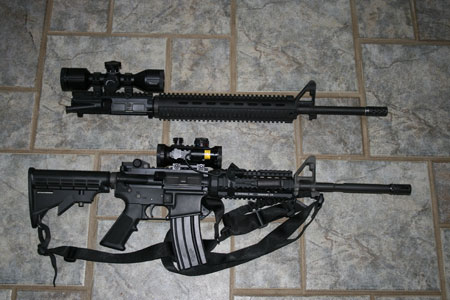 |
| Whether you want red-dot performance, like the STS (bottom) or the STS4x32, the BSA line offers scopes that are durable, easy to use and affordable. That adds up to a great value. |
Although BSA Optics was formed in 1996, the company has deep roots in British history. The company was conceived by Royalty feeling the need for weapons to protect Britain. They produced whatever was needed throughout history making weapons and machine work for weapons.
They became munitions manufacturers when the need arose and in 1866 they became known as Birmingham Small Arms and Metal Company and were the largest arms manufacturer in Europe. That was short lived because as wars end, so do the need for arms. Fortunately we still have them around making high quality optics at affordable prices.
My first experience with BSA Optics was a 3-12x50mm Huntsman Scope. BSA has a large variety of hunting scopes and they have tactical equipment also. I was looking for a quality scope but didn’t want to have a large investment in it. I needed it to use on rifles that I was building or re-barreling to sight with during testing. It wasn’t going to remain on any of the rifles as they would be scoped later with equipment that fit the rifle’s intended use. The Huntsman was the perfect choice for that purpose and I now have it on a Winchester Featherweight that I recently re-barreled to a .308 Win. I planned on using the rifle as a medium weight hunting gun and the scope might just stay right where it is. I will most likely replace the first scope with another BSA.
Of the things I like about the Huntsman, the first, of course, is the price. The quality is way more than acceptable and the multi-coated lens gives high definition and clarity with very little reflection. Usually when talking about 50mm objective lenses you will talk about a substantial increase in price. Not so with the BSA and I used it on a wide variety of calibers up to .300 WM with no adverse effects. I also like the long eye relief. I like my face as far away as I can get with proper cheek weld, especially on the heavier calibers. For a hunting rifle, it is helpful also to get on game that is moving.
The scopes come with a variety of reticules and this one has MilDot which was suitable to me for a testing scope. I have used MilDot quite extensively and am comfortable using it to range and adjust for drop. It works well for me on my hunting guns. The turrets are easy to use and have plenty of windage and elevation adjustment for longer ranges. They also have illuminated dot reticules if that is allowed for big game in your area.
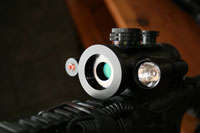 |
| Picatinny rails on the sides of the BSA STS allow for the mounting of additional hardware. |
I also have turned to BSA for tactical equipment. They produce a generous variety of AR friendly scopes, lasers and red dot sights. The Stealth Tactical Series (STS) has just about anything the tactician could possibly need for his or her next mission or competition. I really like the STS Illuminated Sight that not only has a red dot, but a blue and green dot also. Each color has three intensity levels for varying lighting conditions and the three colors will not only accommodate different conditions but also operators that may have less than perfect color vision.
The adjustments for windage and elevation are sizeable, easy-to-operate knobs with graduation marks clearly visible. One click equals half inch is the calibration that works for this type of sight. They are mounted towards the rear of the sight for easier manipulation. The dot control is mounted slightly forward and on top and is easily seen and operated with the weapon shouldered. The red adjustment is toward the front of the sight but if that is the color you are using the intensity can be adjusted while looking through the sight.
One of the new things BSA has added to their sights and scopes is the shudder-like lens protector. I consider it a lens protector but it also can be used to adjust the light intensity allowed into the glass. They are adjusted by a knurled ring fore and aft and can be completely closed or opened to any diameter just like a camera aperture. I have always been a fan of Butler Creek lens covers, but this applies two functions to the same utility and will not accidentally get flipped open. The BSAs are not as quick to get into action if the weather forces you to travel with them closed like the Butler’s quick flip.
 |
| The Gun Digest book of tactical gear. Buy Now |
The sight is equipped with picatinny rails on either side and come with a light and laser sight that can be added if needed. Both options come with pressure switches for activation or can be operated with rear button activation. If your AR is not equipped with a railed forearm, the light and laser can be left right on the sight as a complete unit. I like the added versatility. There is adequate amount of cord to mount the switch just about anywhere on the carbine or rifle. The push button feature allows always on or intermittent option. The sight is finished aluminum with a matte black coating. It has a solid and rugged feel.
Also in the STS series is the low power scopes. On the carbines for CQB work, the 1X Red Dots and lasers are preferable. The utility of the AR also includes longer ranges and BSA also produces scopes for a variety of missions. The STS4X32 is perfect for a close to mid-range tool. BSA supplies the scope with a set of rings to go directly on a flat top receiver or it also comes with mounts for carry top AR or AK platforms. I mounted it on a flat top upper that I interchange with a carbine upper, depending on use. It is compact and rugged for any mission.
The glass, like the red dot, is crystal clear and gives a bright transmission of light. The lenses are also protected with the aperture light adjustment like the red dot and their other STS equipment and they have come up with a preferable turret design for the tactician and sniper. I much prefer turrets with large numbers exposed on the scope for quick adjustment in the field. When working with a MilDot reticule, if the crosshair is going to be the point of impact, the elevation needs to be adjusted to the yardage.
 |
| Gun Digest tactical gear spring 2009 download. Buy Now |
Some of my older target scopes have large turrets but they are covered with a screw on cap. They also seem to have about 50 more threads than they need and take forever to remove, especially if you’re in a hurry. This is inconvenient to move for an adjustment, but without the cap, the turret could bump off, throwing the shot. BSA has a solution to the problem. They designed a push pull turret that has nice readable numbers and lines. The turret is pulled out to adjust the elevation and then pushed in to lock the adjustment down. Once the scope is sighted in with the rifle, the turret can be re-zeroed to the sight in preference. This is nice on the AR scope, but really comes in handy on the precision scopes.
The Ranger reticule in the STS4X32 is designed with the AR in mind. It has hold over marks for elevation adjustments through the scope. It has 100-, 200-, 300-yard distance marks and lines for closer battle. It gives the operator full range use of the weapon. The top two lines represent 3.6 inches at 100 yards and 36 inches at 1000. This can help with quick ranging if the operator knows the size of the target. It also has windage markings for estimated value compensation while aiming.
BSA has a long history of serving the shooting industry for both military and sporting purposes. Most recently they are extending this heritage by offering high quality optics and innovation for both professional and competitive shooters alike. Their variety of equipment and quality cannot be overlooked. Check them out at bsaoptics.com. GDTM

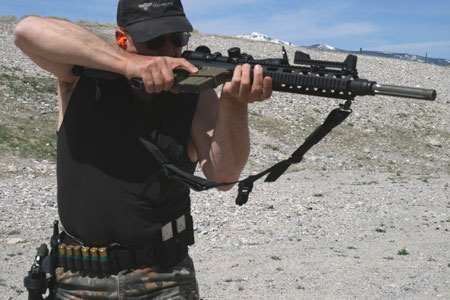
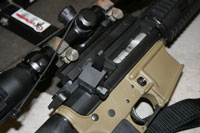
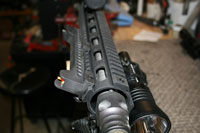
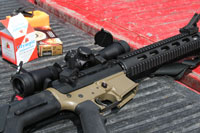
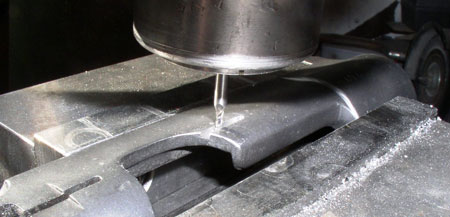
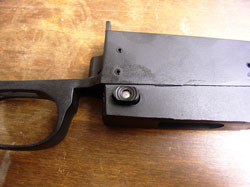
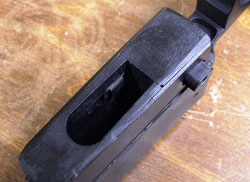
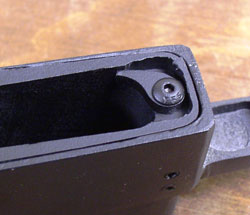
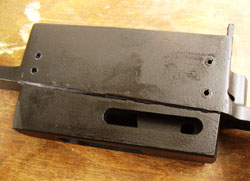
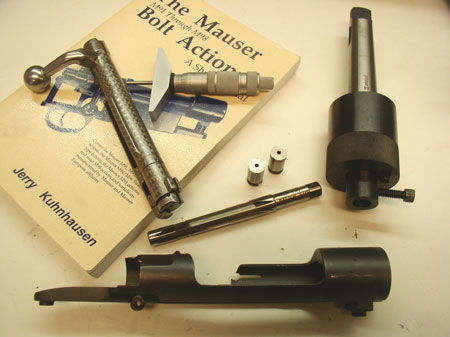
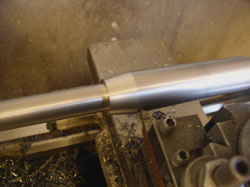
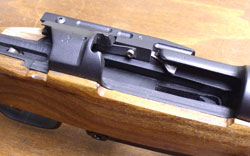
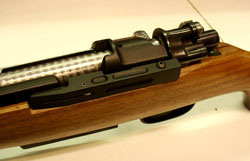
 Collaborative product design and development firm Montie Design announces the availability of its unique portable shooting rest, the second original product conceived, designed, and distributed by the RTP-based company in the last nine months.
Collaborative product design and development firm Montie Design announces the availability of its unique portable shooting rest, the second original product conceived, designed, and distributed by the RTP-based company in the last nine months.
 As the Christian Science Monitor (CSM) reported, “Across America, police departments are using the taxpayer-funded stimulus bill to boost their arsenals with shotguns, handguns, and assault rifles. Take the city of Jeffersonville, Ind. Police there are spending $63,000 of their stimulus bill money to buy 74 new assault rifles for their police cruisers.”
As the Christian Science Monitor (CSM) reported, “Across America, police departments are using the taxpayer-funded stimulus bill to boost their arsenals with shotguns, handguns, and assault rifles. Take the city of Jeffersonville, Ind. Police there are spending $63,000 of their stimulus bill money to buy 74 new assault rifles for their police cruisers.”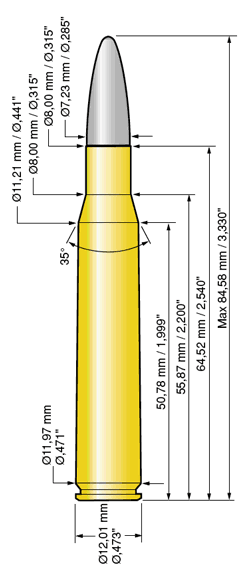 In the world of hunting cartridges there are some winners and some losers, those cartridges that never quite measured up to the media hype and those that exceeded all expectations. Some of the winners were slow to catch on and some of the losers were slow to die; regardless of false starts, name changes and so forth, Remington had a winner with the .280.
In the world of hunting cartridges there are some winners and some losers, those cartridges that never quite measured up to the media hype and those that exceeded all expectations. Some of the winners were slow to catch on and some of the losers were slow to die; regardless of false starts, name changes and so forth, Remington had a winner with the .280.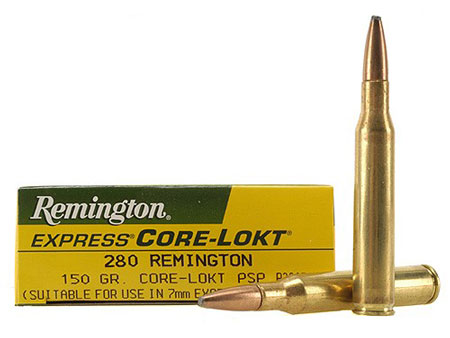
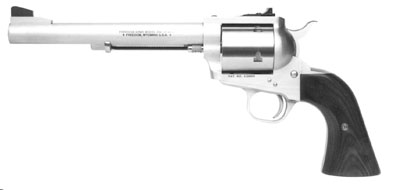
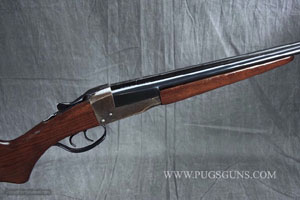 The short answer is yes, but it would take more space than Gun Digest can give us for this Q&A column to give you complete answers. For now I can tell you, sticking to doubles only, that:
The short answer is yes, but it would take more space than Gun Digest can give us for this Q&A column to give you complete answers. For now I can tell you, sticking to doubles only, that: A: Its design features have not been improved from the time it was developed in its most refined form as the G98 rifle and K98k carbine. The rifle and carbine have features that simplify the job of a soldier — mainly to kill the enemy swiftly and efficiently. The magazine is within the stock of the weapon, providing balance and trim lines. The bolt cocks upon opening, making it easier for a soldier to cycle the action.
A: Its design features have not been improved from the time it was developed in its most refined form as the G98 rifle and K98k carbine. The rifle and carbine have features that simplify the job of a soldier — mainly to kill the enemy swiftly and efficiently. The magazine is within the stock of the weapon, providing balance and trim lines. The bolt cocks upon opening, making it easier for a soldier to cycle the action. A: Estimates exceed 102 million. During World War I and World War II, records were destroyed, so we don’t have accurate figures.
A: Estimates exceed 102 million. During World War I and World War II, records were destroyed, so we don’t have accurate figures.![Best Concealed Carry Guns In 2025 [Field Tested] Wilson Combat EDC X9S 1](https://gundigest.com/wp-content/uploads/Wilson-Combat-EDC-X9S-1-324x160.jpg)


![Best 9mm Carbine: Affordable PCCs [Tested] Ruger Carbine Shooting](https://gundigest.com/wp-content/uploads/Ruger-Carbine-Shooting-100x70.jpg)
![Best AR-15: Top Options Available Today [Field Tested] Harrington and Richardson PSA XM177E2 feature](https://gundigest.com/wp-content/uploads/Harrington-and-Richardson-PSA-XM177E2-feature-100x70.jpg)
